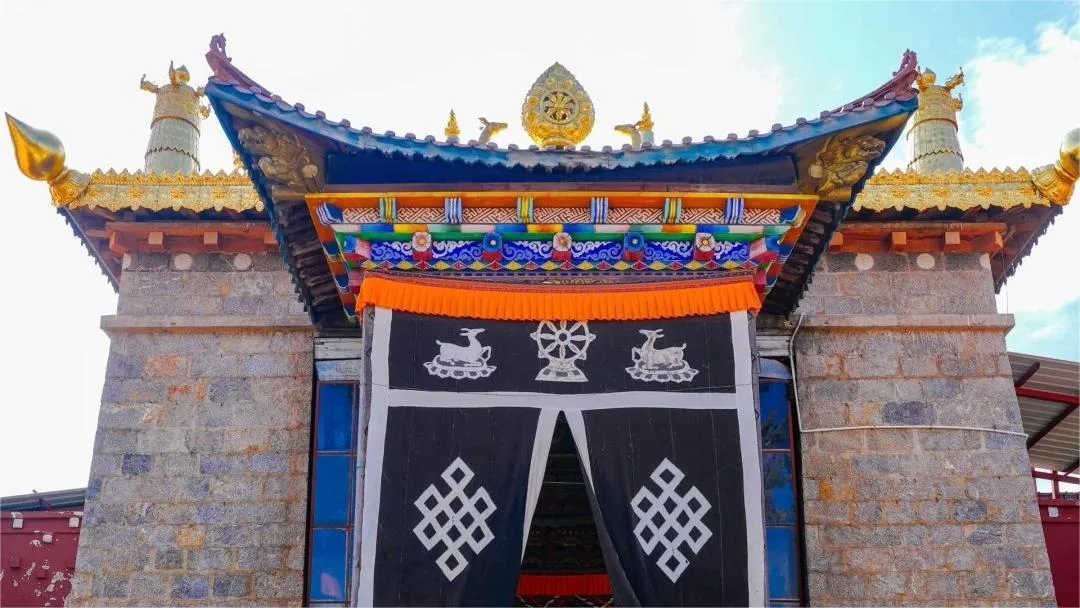Baiji Monastery (百鸡寺), founded during the Ming Dynasty, is a Gelug sect temple situated atop the western hill of Dukezong Anicent Town. The monastery, also known as the “Temple of a Hundred Chickens,” holds a significant place in local religious and cultural practices. The original structure was destroyed by bandits in the eighth year of the Tongzhi Emperor’s reign (1869). It was reconstructed in 1873 with funds donated by the official Feng Naixiong. However, the temple faced complete destruction again during the Cultural Revolution. In 1990, the Senior Citizens Association of Zhongxin Town raised funds to rebuild the monastery, which is now managed by monks from the Songzanlin Monastery.
Baiji Monastery has become a spiritual haven for local people, who often visit to pray and make vows, especially during times of natural disasters or personal tribulations. A unique aspect of the temple’s tradition involves the release of chickens as a form of “life release” ritual. This practice has led to the temple and its surroundings being populated by numerous chickens, earning it the name “Temple of a Hundred Chickens.” When locals come to offer incense, they also scatter grain, which attracts even more chickens to the area.
The architecture of Baiji Monastery is inspired by the Potala Palace, exuding a majestic and elevated presence. In front of the temple stand seven ancient incense trees, each several dozen meters tall and three to four meters in circumference, remaining green throughout the year. From the top of Baiji Monastery, visitors can enjoy a panoramic view of the new city of Shangri-La and the old town of Dukezong.
In the hearts of local Tibetan Buddhists, Baiji Monastery holds a special place for its perceived spiritual efficacy. Consequently, many local Tibetans make regular pilgrimages to the temple to offer incense and walk the kora, the circumambulatory path around the temple. It is believed that walking the kora an odd number of times brings blessings. On specific days, such as the first and fifteenth of the lunar month, countless devotees gather at the monastery to seek blessings and fulfill their vows by releasing chickens.
At dawn, the crowing of roosters released as part of the ritual reverberates across the ancient city, waking its residents and marking the beginning of a new day filled with activity and devotion. The monastery’s rituals and the surrounding natural beauty create a serene yet vibrant atmosphere, deeply intertwining the spiritual and daily lives of the local communities.
Basic Information
| Estimated Length of Tour | 0.5 – 1 hour |
| Ticket Price | Free |
| Opening Hours | 24 hours a day throughout the year |
Location and Transportation
Baiji Monastery is located in Shangri-La City, Diqing Tibetan Autonomous Prefecture, Yunnan Province, China. Specifically, it sits atop the hill behind the Dukezong Ancient Town on Dawa Road. To get to Baiji Monastery, you have two convenient options:
Taxi: Take a taxi from Shangri-La city center to Dukezong Ancient Town. The fare is approximately 20 to 30 RMB.
Bus: Take bus number 1 within the city and get off at the Dukezong Ancient Town entrance. The fare is 1 RMB. From there, it’s a short walk to the monastery.





